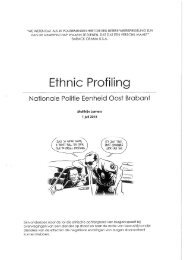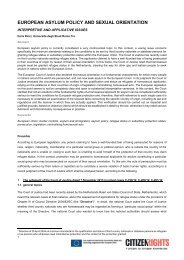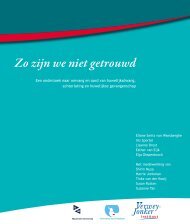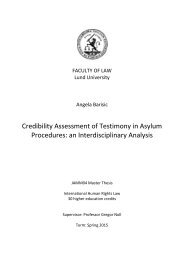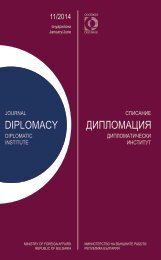AEMI
AEMI-2016-web
AEMI-2016-web
You also want an ePaper? Increase the reach of your titles
YUMPU automatically turns print PDFs into web optimized ePapers that Google loves.
204 <strong>AEMI</strong> JOURNAL 2015 2016<br />
resentation. The priest of Pragelato, with<br />
the mayor, was one of the central figures<br />
of the twinning celebrations. He organized<br />
the visit of the Germans to Pragelato<br />
in the month of September 2014.<br />
On that occasion there were two ecumenical<br />
celebrations, jointly performed<br />
by the Catholic priest, a Waldensian<br />
Italian minister and the minister of the<br />
German community.<br />
The first celebration took place in<br />
the so-called ‘places of memory’: Laval<br />
and Troncea, the two highest hamlets<br />
of Pragelato. Laval is uninhabited since<br />
1942, but in the summer the shepherds<br />
use the village as a base to reach<br />
the highest pastures. Here there is an<br />
old church, S. Giacomo, where the celebration<br />
was held. This building has a<br />
symbolic meaning for two reasons. The<br />
bell of the church is the ancient bell of<br />
the old Waldensian temple, destroyed in<br />
the seventeenth century, and the church<br />
itself was erected as late as 1698. Moreover,<br />
the small cemetery next to the<br />
church, called the ‘graveyard of the miners’,<br />
contains the victims of an avalanche<br />
that in 1904 overwhelmed the workers<br />
who were coming downhill from the<br />
mines of Beth, about one hundred meters<br />
above Laval. The tragedy of Beth,<br />
though painful, marks the history of the<br />
Pragelato community. The miners who<br />
lost their lives in that accident were both<br />
Catholics and Waldensians, originating<br />
from the nearby Waldensian Valleys.<br />
The episode is therefore very significant<br />
in the twinning celebration, so that the<br />
priest and the pastor mentioned it in<br />
their speeches.<br />
Transnational Heritage in Diasporic<br />
Communities<br />
Another feature I identified in my research<br />
is the notion of ‘heritage’. David<br />
Lowenthal observed that heritage clarifies<br />
pasts so as to infuse them with present<br />
purposes (1998). Each Waldensian<br />
transnational group I met identifies itself<br />
with a Waldensian heritage (Gosso,<br />
2015). Some testimonies from my fieldwork<br />
are particularly significant:<br />
We are Americans, but this is our heritage»<br />
(G. L. C., Waldensian Presbyterian<br />
Church, Valdese, USA, 2014).<br />
The doctrine and the tradition of my ancestors<br />
belong to me» (C. L., Waldensergemeinde<br />
Rohrbach-Wembach-Hahn,<br />
Germany, 2014).<br />
I consider myself very blessed to have a<br />
rich heritage and legacy left to me by the<br />
Waldensian people of the Piedmont Valleys<br />
of Italy» (S. G., Cardon Families Organization,<br />
USA, 2014).<br />
Heritage was a word very much used by<br />
my informants to describe their identification<br />
within the Waldensian world,<br />
and it was a useful term also for me<br />
to describe them, because, as I said for<br />
the case of the Germans, Waldensians<br />
abroad gradually migrated into other<br />
religious denominations. The only exception<br />
is the case of the Waldensians<br />
who migrated to South America, where<br />
they maintained an official Waldensian<br />
Church (Geymonat, 1994). What is interesting<br />
today is that in Italy it is possible<br />
to convert and become a Waldensian,<br />
while in the cases of Germany and<br />
North America people are Waldensian<br />
by birth (Watts, 1947), which entails




